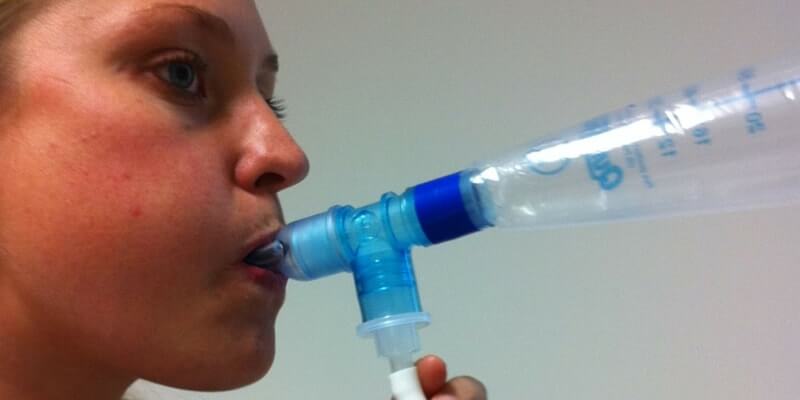
According to data from Roy Morgan, lactose intolerance is on the rise among Australian women. In the 2011, only 3.8% reported lactose intolerance, but by 2015 this had risen to 6.2%. So what’s happening? Are women more aware of their bodies and active in getting to the root of a problem?
Lactose intolerance is caused by variation in our genetic makeup, stemming from a branch in our ancestral tree thousands of years ago. It’s estimated that up to 75% of the global population are intolerant to lactose as adults.
What is Lactose and why are we intolerant to it?
According to Nutrition Australia, Lactose is the main carbohydrate found in all kinds of milk. When we are born, our bodies contain an enzyme named lactase that can digest it, which is handy as milk is the primary diet for newborns. However, as some of us age, our bodies naturally lose the ability to produce lactase, making us intolerant to lactose.
- The Food Intolerance Institute of Australia points out that “humans are the only mammals on earth to continue the consumption of milk after two years of age. And even then it is not our own human milk – but the milk of another species”.

Why isn’t everyone lactose intolerant?
Dr. Kruszelnicki in this article for the ABC points out that lactose tolerance comes down to a genetic mutation originating near modern day Hungary some 3,000-7,000 years ago. Before then, all humans were lactose intolerant as adults. The one-third of adults who can still produce lactase are descendants of cattle herders, who adapted to continue producing lactase. The result was a survival advantage, with their descendants being more fertile, thus tolerance to lactose spread.
If you, or your direct descendants originate from near the source of the gene mutation, you are more likely to be tolerant to lactose. In Scandinavia and surrounding areas the lactase enzyme is dominant, but as you move further away the tolerance level drops. Places such as Spain, France and Arab populations the lactase enzyme is reduced by 50% and in China is as low as a few percent.
As Australia was predominantly colonised by those with the lactase enzyme, the rate of tolerance is high, and the same goes for the United States. However, Nutrition Australia states that the Aboriginal population is more likely to be lactose intolerant, as presumably would be native North Americans.
- This map of lactose intolerance from Foodbeast gives a great global snapshot.
Three common types of intolerances
According to Dr Karl Kruszelnicki, these are:
- Congenital Lactase Deficiency – A rare genetic disease where the lactase enzyme is not present at birth. However, babies can still receive vital nutrients at birth with baby formulas that exclude the carbohydrate, lactose.
- Secondary, Acquired, or Transient Lactase Deficiency – This is when the small intestine is impacted by intestinal parasites, chemotherapy or acute gastroenteritis.
- Primary Lactase Deficiency- This is what most human’s experience, lactose intolerance.
According to The Food Intolerance Institute of Australia if you’re lactose intolerant you may experience persistent headaches, digestive complaints, frequent colds, low iron levels and skin problems.

Is this a significant issue for Australians?
Australia is a multicultural nation, so the expected rates of lactose intolerance are fairly difficult to measure, especially in large urban centres. However, the majority of people have roots in Europe, so are likely to be able to tolerate lactose.
According to the ABS, “at 30 June 2013, 27.7% of the estimated resident population […] was born overseas”. The majority of these people are from the United Kingdom, but populations from nations such as India and China have seen growth. Should residents from more lactose in tolerant nations continue to migrate to Australia, these rates could easily increase.
Here are the top 10 nationalities that make up the 27.7% of those born outside Australia, and their predicted lactose tolerance.
| Country | % of Australian population change 2008-2013 | Estimated lactose intolerance (%)^ | |
| 1 | United Kingdom | Decreased | 0-20 |
| 2 | New Zealand | Increased | 0-20 |
| 3 | China | Increased | 80-100 |
| 4 | India | Increased | 40-60 |
| 5 | Vietnam | Increased | 80-100 |
| 6 | Philippines | Increased | 80-100 |
| 7 | Italy | Decreased | 40-60 |
| 8 | South Africa | Increased | 80-100 |
| 9 | Malaysia | Increased | 80-100 |
| 10 | Germany | Decreased | 20-40 |
^ Source: http://www.foodbeast.com/news/map-of-milk-consumption-lactose-intolerance-around-the-world/
This third of the population born outside Australia, of course, doesn’t take into account those born in Australia, but with heritage from different part of the world.
Symptoms of lactose intolerance
Lactose intolerance can often go undetected, because people believe symptoms are unrelated or ignore them and continue with discomfort. However, there are a number of recognisable symptoms, Roy Morgan Research states that those with lactose intolerance are more likely to:
- Experience nausea – 158%
- Get diarrhea – 183%
- Be vitamin deficient – 212%
- Suffer from digestive problems – 421%
Looking at these statistics you can understand why lactose-intolerant Australians are 13% less likely than the average Australian to confidently say that ‘I’m feeling well and in good health’. For the people who do experience lactose intolerance, Roy Morgan reports that 58.6% of them avoid dairy foods whenever possible, compared with the national average of 13.4%.

Image source
Diagnosis with simple tests
If you suspect you may be lactose intolerant, or regularly consume lactose products and experience the above symptoms, it’s wise to visit your doctor. Dairy products are a staple part of many people’s diet, providing many important nutrients such as calcium and vitamin K. Additionally, dairy products contain differing amounts of lactose, from Milk with around 8-10 grams of lactose per cup, to cheese with virtually none. Nutrition Australia says it’s important to not self-diagnose as there could be other issues at play causing similar symptoms. Additionally, the tests for intolerance are very simple and non-invasive, for adults and non-diabetics these include:
- Hydrogen breath test: this involves drinking a lactose liquid and measuring the hydrogen levels in your breath over several hours. Those with high hydrogen levels may have lactose intolerance.
- Lactose tolerance test: drinking a lactose solution and measuring blood sugar levels over 2 hours. If blood sugar levels remain the same, you may have intolerance.

How is this condition managed?
Despite lactose intolerance causing many undesirable side-effects, excluding all dairy from diet is not always necessary as it can often be tolerated in small doses. Better Health Victoria explain that, a glass of milk contains 8-10g of lactose which contains important nutrients such as calcium, vitamin K and the B vitamin Riboflavin. These are all vital nutrients to promote bone health, and going without can lead to long term health problems such as osteoporosis.
- Better Health Victoria recommend full-fat milk because the fat promotes a slower release of milk through the intestines, therefore allowing the lactase enzymes adequate time to break down the sugars.
Understanding Nutrition (Whitney et al., 2014) explains that all lactose intolerances must be treated individually and should be done with the direction of a health professional. For people who decide to cut out all dairy they should be especially careful when purchasing products which may contain some form of lactose. Even non-dairy foods, such as bread, cereal, quiche and ice-cream can contain lactose, so labels should be read to look out for foods that include, milk, milk solids, whey and casein.
Medications should also be checked with a pharmacist because “20 per cent of prescription drugs and 5 per cent of over-the-counter drugs contain lactose as filler”.

Relatively safe food options
Some dairy products can contain a very small about of lactose which can be tolerated without any complaints. The Better Health Victoria suggests consuming the following:
- Hard and matured cheeses such as cheddar, Edam, mozzarella, brie and feta. Butter and cream also contain small amounts
- Dairy products that are fermented can also be tolerated such as yoghurt and kefir because the bacteria consume the lactose for energy
- Fresh cheeses such as cottage cheese and ricotta are another type of dairy that can also be tolerated in small doses.
Why are women reporting an intolerance to lactose?
Speculatively, it is suggested that Australian women are reporting higher levels of intolerance because men are less likely to seek diagnosis. Despite this potential, Roy Morgan explains their data show that almost identical proportions of men (27.3%) and women (27.5%) visit their doctor in any given four weeks. In addition, women may be more proactive when it comes to treating any health disturbances.
Investigate private health insurance: compare providers here.
The Roy Morgan statistics demonstrate that Australia’s numbers are growing and in particular for women. Luckily, there are already countless alternatives available on shelves for those diagnosed, making the management of this condition that little bit easier.






